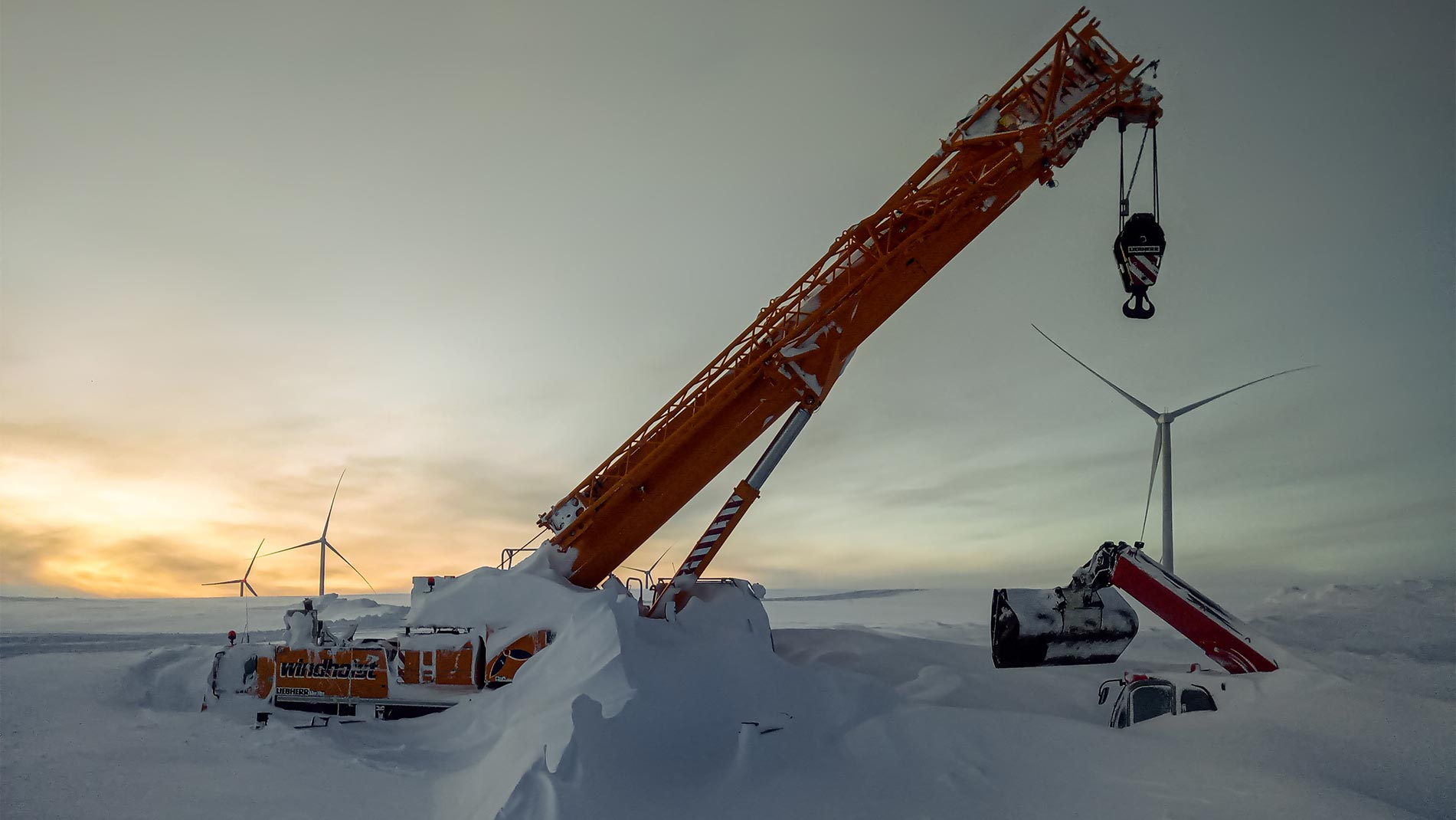You are here
Liebherr Group: Products & Services for United Kingdom of Great Britain and Northern Ireland
Other websites for United Kingdom of Great Britain and Northern Ireland

The Raggovidda wind farm in Norway is located in N-Berlevåg, at the same latitude as the North Cape. This is the most northerly wind farm in the world and also one of the most efficient due to the constant strong wind in the area.

15 wind turbines with a total rating of 45 MW have been operating there since 2014. The wind farm is currently being expanded with an additional twelve turbines. And, of course, Liebherr cranes are in action there. In November 2021, the weather in N-Berlevåg proved to be something of a challenge with winter storms and snow. An engineer from our Norwegian Liebherr sales and service partner, Ing. Hans P. Øen AS, nevertheless made his way to the site, despite the adverse conditions, to carry out troubleshooting work on an LTM 1090-4.1, which would no longer start, so that he could order the required spare parts.

In January 2022, the weather conditions at the Raggovidda wind farm had deteriorated significantly. Our customer Windhoist requested our support – three of its Liebherr cranes, an LTM 1090-4.1, LTM 1130-5.1 and LTM 1200-5.1, had been completely buried in snow and damaged by the extreme weather conditions in the region. Frequent storms combined with snow made working at the site very challenging for our service team. Service engineer Björnar Flowers, who originates from northern Norway and is familiar with the challenging weather in the region, nevertheless set out to the site.
Track vehicles were required to transport Flowers and others to the machines due to the poor road conditions. The engineer was later given a snowmobile to ensure that he could travel around the site. The weather at the Raggovidda wind farm was so extreme that it was not even possible to complete a full day’s work every day.


The first of the three Liebherr cranes to be excavated from the mounds of snow was the LTM 1200-5.1. The snow had been driven into every cavity on the crane by the powerful storm, even into the outriggers and engine bay. Flowers takes up the narrative: “I removed snow from the engine with my bare hands, which took me over four hours. Then I was able to replace the V-belt and start the machine, whose battery was discharged, using external power.” Flowers used precisely the same procedure to remove the snow from the superstructure. Once again, the snow storm had left its mark and caused some damage – the tilt sensor was defective and a cable had been torn away
Once the machine had been restarted, the next challenge immediately became apparent – all the snow around it first had to be removed before it would be possible to move the LTM 1200-5.1. Excavators had to be used for this work. “Near the crane, however we had to work by hand with shovels so that we didn’t damage the crane”, adds Flowers. Together with five people from Windhoist, he got to work. The men worked for hours with their shovels to free the crane from the snow. Then all the snow had to be removed from the cavities. A large hot air unit and a small heat gun were used for this purpose.

When the crane had finally been freed, its route away from its position had to be cleared using a snowblower. The whole process took a lengthy 32 hours. After this, the machine was driven to N-Berlevåg, where it was placed in a warm storage shed so that the remaining snow could thaw and the crane could be prepared for further repair work.
The same process had to be repeated for the other two cranes, with each taking a full week to be recovered. The extreme weather conditions had caused a good deal of damage to all of the cranes. The compressed air tanks on the LTM 1090-4.1, for example, were empty and the gearbox was stuck between two gears which meant that the engine could not be started. The very low temperatures had even frozen the fuel in the superstructure. These challenges were also successfully mastered. All in all a demanding operation with great cooperation between our Liebherr service and our customer Windhoist.
This article was published in the UpLoad magazine 02 | 2022.